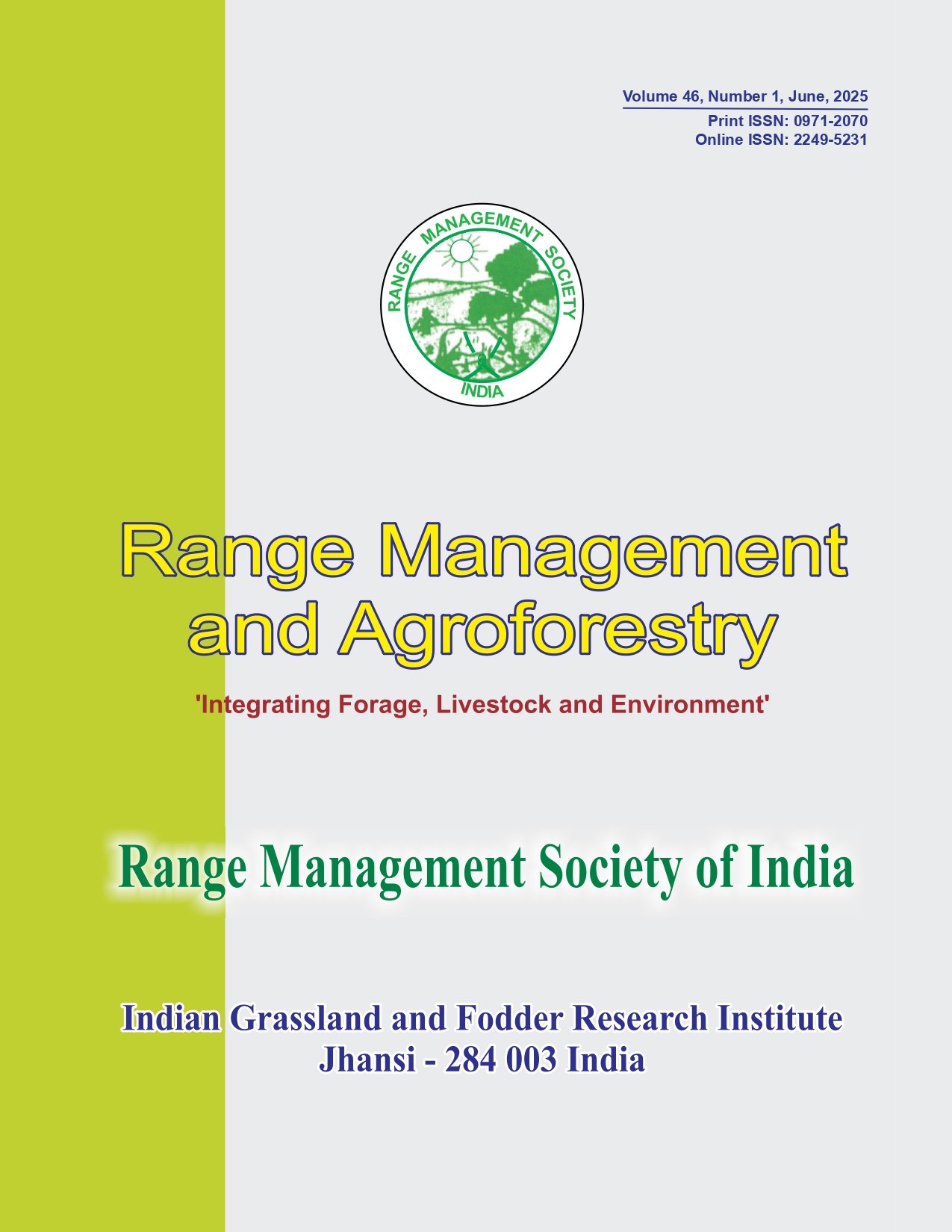Morphological and molecular identification of stem rot pathogen in berseem (Trifolium alexandrinum L.)
Keywords:
Berseem, Fodder crop, Sclerotia, Sclerotinia trifoliorum, Stem rotAbstract
Berseem is an annual leguminous multicut fodder crop of India and grown during rabi season. Stem rot disease was observed in seed production fields. The etiological agent causing symptoms of stem rot was identified by morphological and molecular criteria. The fungal pathogen was isolated on potato dextrose agar (PDA) medium and development of whitish mycelia with numerous black colored sclerotia was observed throughout the colony. The sclerotia were initially brown and turned black upon maturation. Effect of different temperatures and pH on growth of stem rot pathogen was determined at 48, 72 and 96 h. The pathogen was able to grow at a temperature range 5 °C to 30 °C and pH range 5 to 8 and showed maximum growth at 20±3 °C and 6.5±0.5, temperature and pH, respectively. The number of sclerotia, fresh weight, size (length x width) and thickness was maximum at a temperature range 20 °C to 25 °C and pH range 6 to 6.5. PCR amplification of ITS region of rDNA with primer pair produced a fragment size of 550 bp. The rDNA sequence analysis of pathogen showed only 1 to 2 SNP difference with reference isolates of S. trifoliorum and S. sclerotiorum, which resulted 99% homology with reference sequences of S. trifoliorum and deposited in NCBI, GenBank. The phylogenetic analysis confirmed molecular relationship of berseem stem rot pathogen (MF035963) with different strains/ isolates of S. trifoliorum and closely related to S. sclerotiorum (KJ744364).




